As we did in Dubrovnik and Sarajevo, we started our first day in Zagreb with a local guide who took us on a walking tour of the city. We began in the Donji Grad or Lower Town and finished in the older section of the city the Gorjni Grad or Upper Town. I mention this because I think Damir asked our local guide to change his normal route principally because of a promise he’d made to us in Dubrovnik but possibly because of my influence. I will reveal that when I write about our excursion tomorrow to Kumrovec – the birthplace of Marshal Tito.
We met our guide in Zagreb’s central square or, as it’s known officially, Trg bana Jelačića.
(The thin fellow in the grey shirt at the base of the statue is our guide.)
The square was originally called Harmica but was renamed in 1848 to honor Josip Jelačić. Jelačić is an interesting character. There’s some evidence that he advocated for Croatian independence from Austro-Hungarian rule but that he did so by essentially playing one side against the other.
Jelačić ingratiated himself to the Austrian court in part by suppressing revolutionary movements in Northern Italy in the very busy political year of 1848. His success brought him to Vienna where he initially refused the offer of Austrian Emperor, Ferdinand I, to become Ban of Croatia. (Ban was a title used generally to mean governor or for local land administrators in the Southern Slavic areas of Austro-Hungary.) His refusal was supposedly based on Croatia being a dependent territory of the Hungarian throne.
After a period of deteriorating relations, in March of 1848, specifically 15 March, the Hungarians rose in a revolt of their own against the Austrians and Jelačić actively opposed the Hungarians. A week after the start of the Hungarian uprising, the Sabor (Croatian National Assembly) elected him as Ban – a position he then accepted at the beginning of April.
Seeking Croatian autonomy from Hungary, now Ban Jelačić, severed all official ties with that Kingdom. The initial reaction from Vienna was to oppose this decision seeing it as an act of separatism by Jelačić. They declared the Sabor illegitimate and cited Jelačić as a rebel. However, when Jelačić refused to cede any power to the newly formed Hungarian government led by Lajos Batthyány as its Prime Minister, they had a bit of a change of heart. While still viewing him as a rebel, the Viennese now also saw him as support and a southern bulwark against the Batthyány government.
On 19 April 1848 Jelačić proclaimed the union of Croatian provinces, and their separation from the Kingdom of Hungary. By late summer, sensing the growing disorder in the Austrian Empire, he led more than 50,000 soldiers and auxiliary troops across the Drava River and occupied the area known as Međimurje. (This is now the most densely populated county in Croatia.) The fighting continued into June 1849.
Because of his approach to the unsettled situation, in Vienna, Jelačić was viewed as a rebel who sought the breakup of the empire. In Hungary, where they often refer to him as “Jelačić the coward” they continue to view him as a traitor who suppressed and opposed their independence seeking uprising. In Croatia, he was, and is, viewed as a national hero.
The statue of Jelačić you see above was erected in 1866 seven years after his death. However, in its original incarnation, it looked like this:
Notice that in the top photo, the statue faces south while in the original installation, he faced north. In this incarnation, the Ban, with sword drawn, faces north holding off the Hungarians. In 1946, the square was renamed Trg Republike (Republic Square) and Jelačić’s statue was removed in 1947. Because he had repeatedly pledged loyalty to the Austrian emperor, the new Communist government of Yugoslavia denounced him as a “servant of foreign interests.” A gallery curator hid the statue in the basement of his museum.
After Croatia regained its independence, the square was once again named for Jelačić and the statue was reinstalled but this time he faces south repelling not the Hungarians but the Serbians.
Jelačić is also honored with a portrait on the 20 kuna note. (We learned from our guide that before the use of currency, the people of the region typically used the fur of martens in trading. The Croatian word for marten is kuna kuna. Thus the derivation for the name of their currency is analogous to the derivation of an American’s use of ‘buck’ as slang for dollar because frontier trade between Europeans and Native Americans was often made with buckskins.)
Now that you’ve learned more than you ever thought you’d know about someone you’ve never heard of, I’ll dig deeper into our grab bag of activities.
Nine Views.
This is a bit of a tangent from our walking tour but represents a curious activity similar to one we have in Washington but also somewhat unique to Zagreb. (Its existence was something I learned in my pre-trip reading about the city.)
In 2004, an artist named Davor Preis had a two-week exhibition in the Josip Račić Exhibition Hall in Zagreb. It included a sculpture called Prizemljeno Sunce or The Grounded Sun. Afterward, he placed models of each of the nine planets at various spots around the city. (Pluto wasn’t reclassified to dwarf planet status until 2006.) This installation is called Devet Pogleda (Nine Views). Because the solar system is installed at a scale of 1:680,000,000 in terms of both size (with the sun being a 2 meter sphere) and distance, I knew I wouldn’t see all the planets. (The Grounded Sun is in the lower town while Pluto, for example, is nearly eight kilometers from that spot.) But I thought I might be able to find one or two.
I asked our guide about this and I knew that Venus was somewhere on Jelačić Square. As one might expect, he knew where it was and he pointed that out to me:.
On my own, later in the day, I’d locate Earth:.
(At this point, I will tell you that the first day in Zagreb is the last day for which I have photos. It was here that the touchpad on my laptop stopped working so I began leaving my photos on the SD card in my camera. This was a great backup plan until I lost the camera somewhere in Budapest. I note this because it was the next day that I realized I’d walked by the sun and not photographed it so the picture below is downloaded.)
Before I reveal the sun, I need to note that, for a city of about 800,000 people, Zagreb might have more graffiti per square meter than any city in the world. Damir assured us that, unlike the U S where much of the graffiti can be territorial gang tags, that what we see in Zagreb is almost solely the province of bored, middle-class teens. Among my lost photos are a half dozen or more of Zagreb street art. So, while there are cleaner photos of Preis’ Grounded Sun, this one not only represents Zagreb but is close to the state in which I saw it.
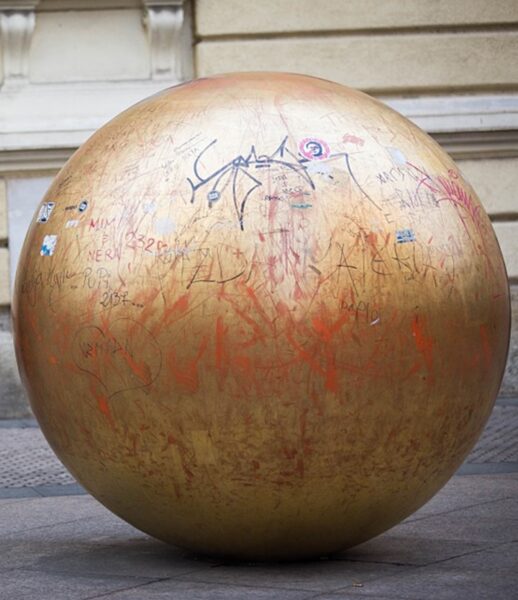
I do need to add that in searching for this photo, I came across another that I feel compelled to include. I don’t know the source (or inspiration) but the picture drew a snort and a headshake from me.
Mozartkugeln is a candy made in Austria.
Note: In keeping with my 2022-2023 reformation of the blog into shorter entries, backdated to maintain their sequence, any comments on this post might pertain to its new configuration. See the full explanation in the post Conventions and Conversions.
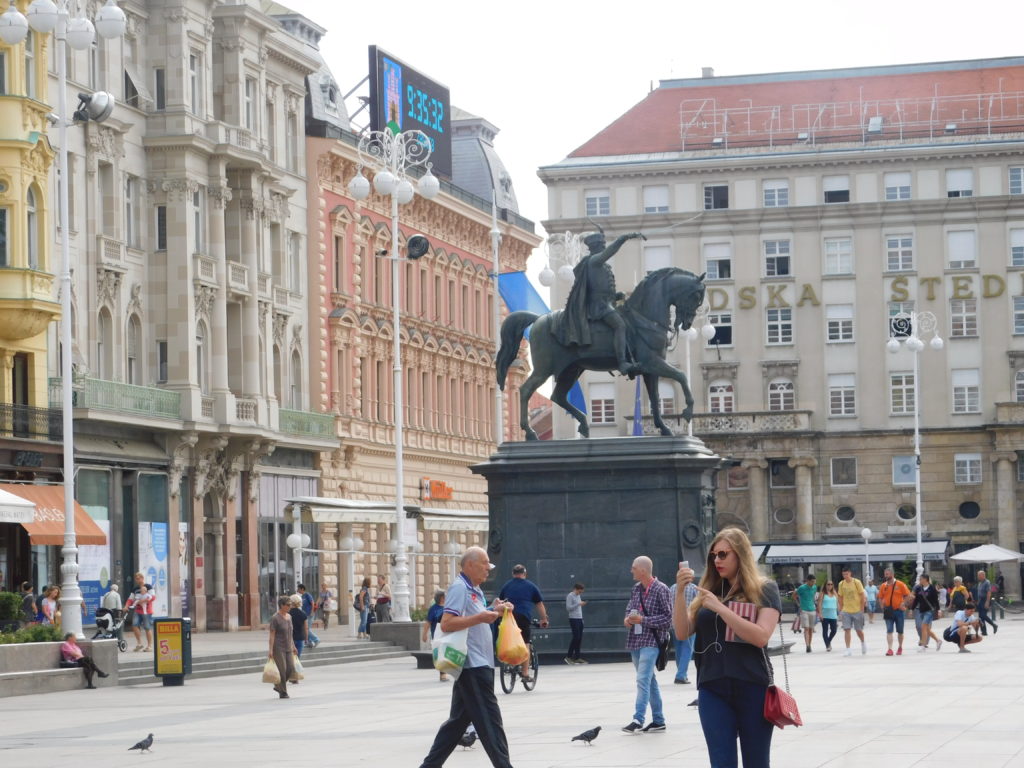
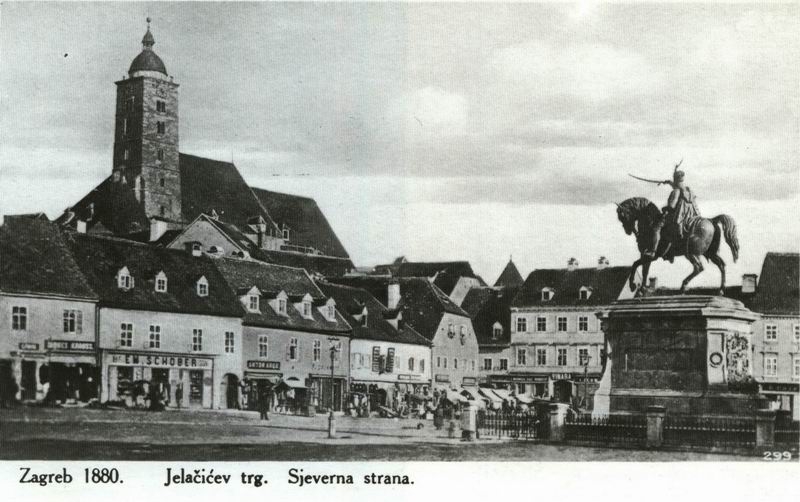
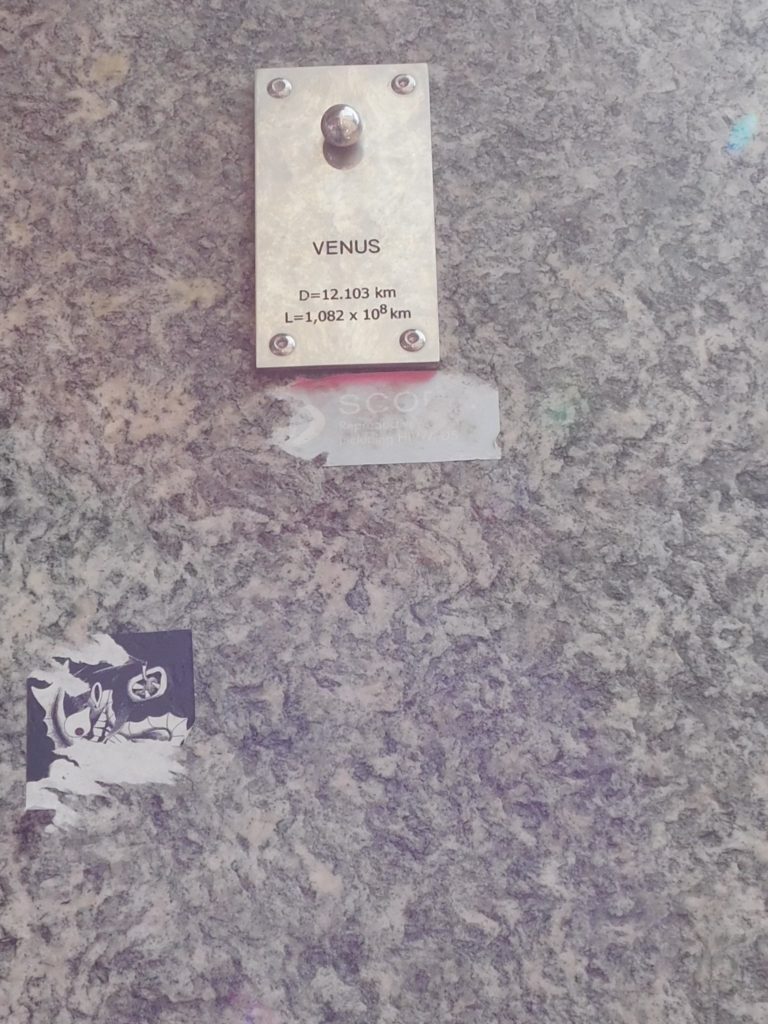
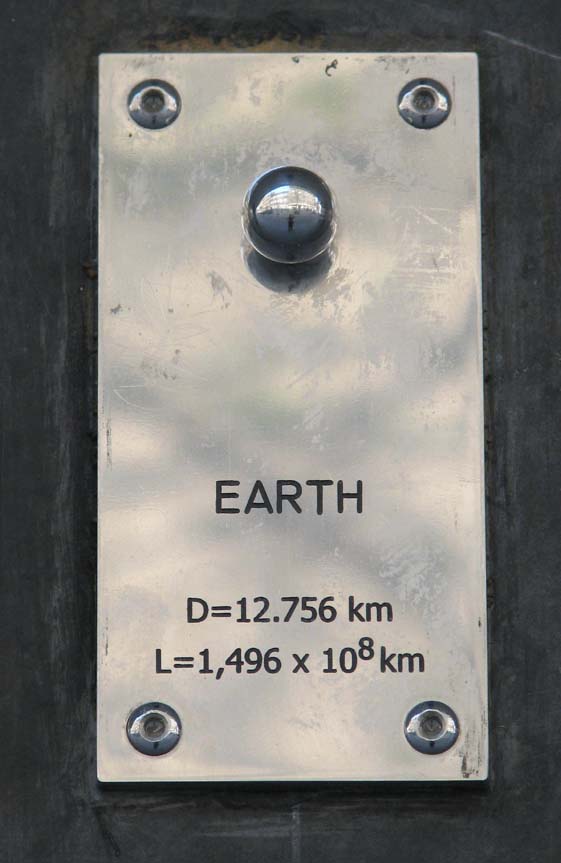
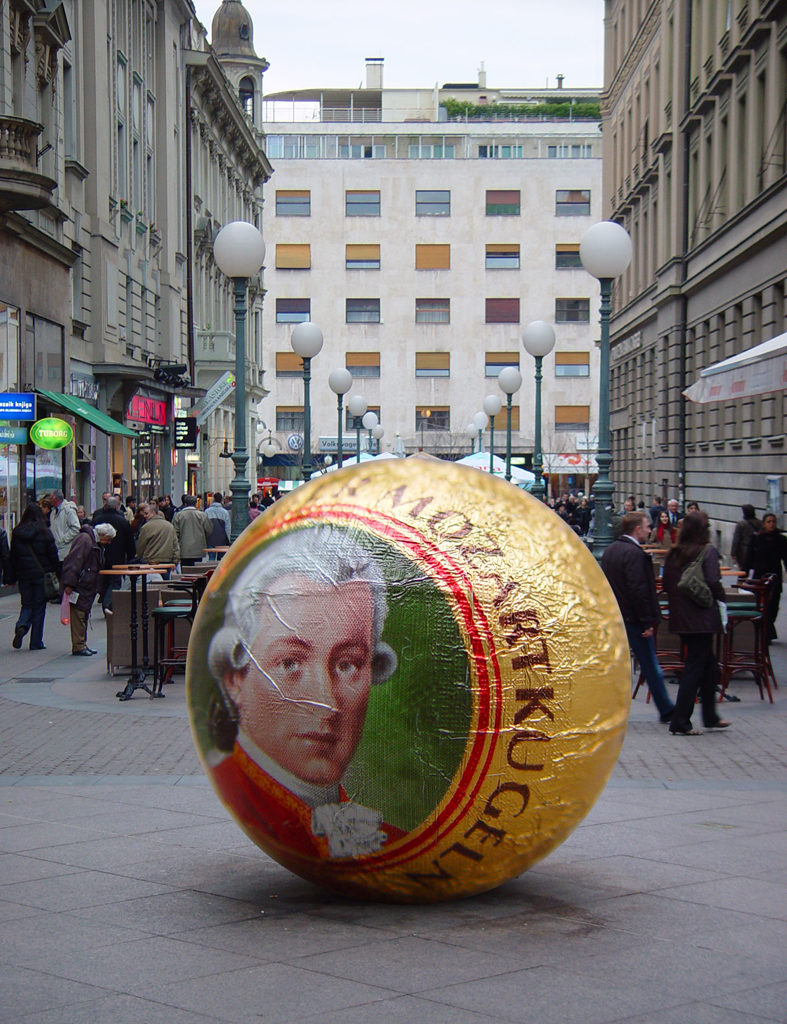
I loved the segments about the Naïve Art Museum (I am a fan o Henri Rousseau – and the DC exhibit of his works some years ago was super). Thanks for the summary of why such art is considered Naïve.
I must also say that the Museum of Broken Relationships sounds like such a Hungarian thing to me (never having traveled to Croatia, but assuming the cultural context is similar). When I worked in Hungary, a colleague shared an expression “Weeping, the Hungarian is happy” translation may have been off a bit, but covered the essence of generally pervasive melancholia punctuated by alcoholic merry-making.
One of the things I noticed, oddly, was that an almost all of the squares (or at least the photos shown) there was no greenery. No petite trees or flower boxes. I found that sad, because many of the open spaces were grand and would be nice to shelter under a small tree on a bench or similar opportunities for people to enjoy the area.
A pity that this is the last of the Todd photos….. Another reason to get a smart phone with a killer camera (Motorola just introduced one that is getting rave reviews)…. a back up plan as it were.
Thanks, Todd.
Thanks for the phone tip, Connie.
As for greenery, there is greenery in other parts of the city – notably along the “green zone” that I showed in the map in a prior post. I didn’t put photos of that because I didn’t find them as aesthetically interesting or as narratively pertinent as the ones I included but I have a few. I will add that my experience of central squares in that they are either very commercial (as in Zagreb) or monumental (such as Red Square or Tienanmen).
Świetny wpis
Dziękuję Ci (This comment and my response are in Polish.) The comment says, “A great entry” and my response is, “Thank you.”